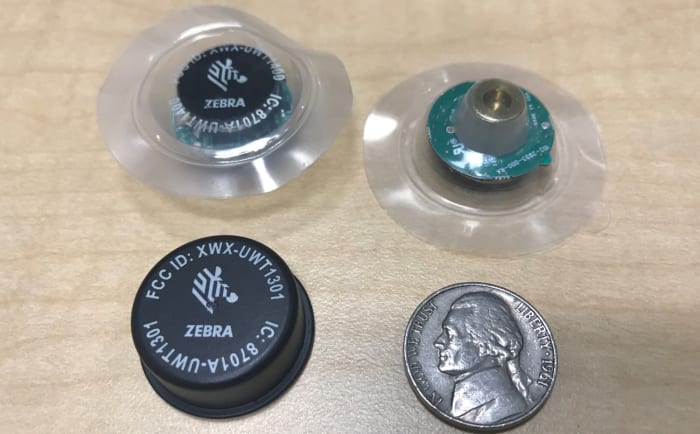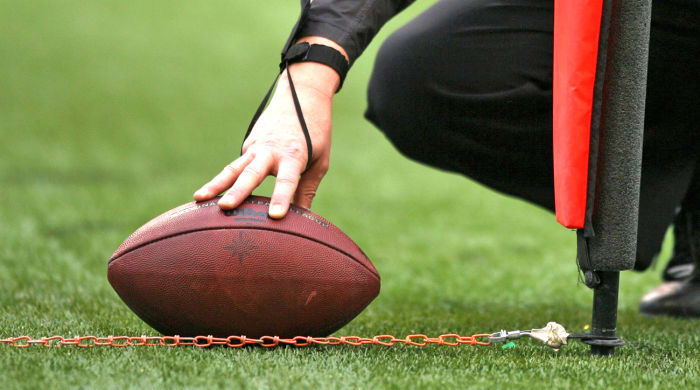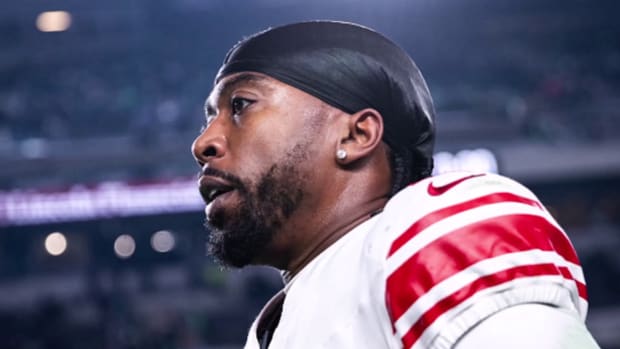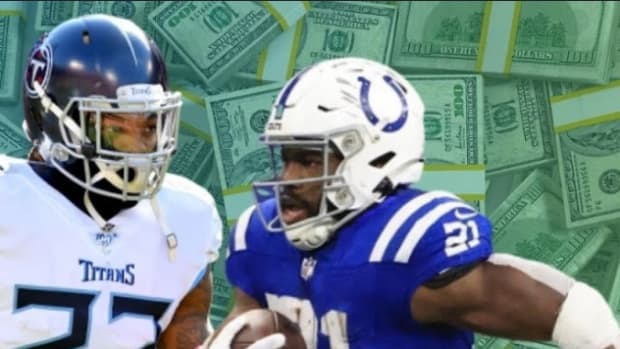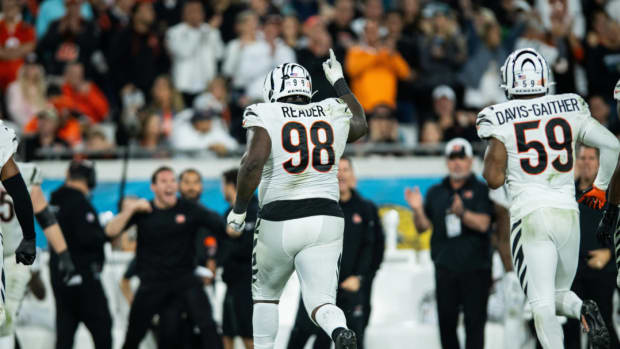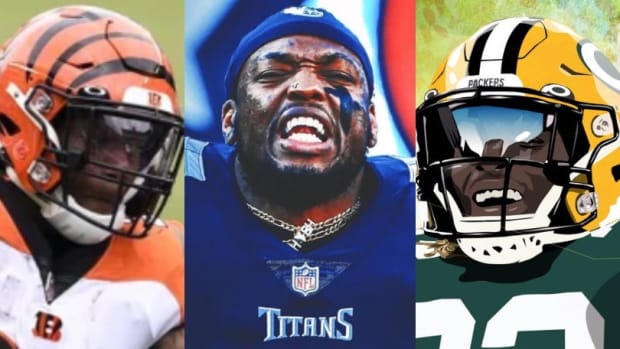The Footballs Having Tracking Chips This Season—But Their Use in Officiating Is Still Just a Dream
We’ll never know how really good Tom Brady was in 2001. We all know the legend, of course: an underpowered, underrated quarterback out of Michigan picked in the distant sixth round of the 2000 draft who went on to become the greatest of all time. After Drew Bledsoe tore a blood vessel in his chest early in 2001, Brady inherited the starting role and took the Patriots all the way to victory in Super Bowl XXXVI, plus four more championships so far. But we’ll still never really know how good that young Brady was, at least not in the same way we’ll know about the careers of quarterbacks starting out this season, like Texans rookie QB Deshaun Watson.
In 2013, Zebra Technologies began tracking the movements of players using RFID tags in shoulder pads in tests run by the NFL, rolling the system out leaguewide in 2015. But players’ position and speed matter little in the NFL if you don’t know where the football is. How can you judge a quarterback without considering all the metrics of his passing ability?
Zebra and Wilson Sporting Goods, the official ball supplier of the NFL since 1941, have been working to make the football a data instrument, too. A couple of tagged balls were trialed at the Pro Bowl in Arizona in 2015, followed by a full-game test at the 2016 Pro Bowl in Hawaii. Last year the tagged balls were used during preseason and in Thursday Night Football games. This season every single ball in every single game is tagged and being tracked.
Inside the 2017 game and practice balls are small electronic tags that measure acceleration and rotation, and broadcast that data to recorders located around the stadium. As with player tags, the ball’s location is calculated by triangulating on the signal.
If you get your hands on one of this year’s official balls, you shouldn’t notice the difference, but the tag is in there, sandwiched between the inner air bladder and the outer leather, just behind the NFL shield. Wilson demoed the ball with active NFL players to see whether they could notice a change. “Sometimes we would just give them the ball and have them play an entire session and just see if we got any feedback, whether they detected anything different with the ball,” says Bob Thurman, vice president of innovation at Wilson. Weighing in at just 3.3 grams (0.12 ounces) the tags are less than 1% of the weight of each ball, and have no apparent effect on the flight dynamics. No one has complained.
There was another concern as well: whether the tags would survive a game. “You’ve got 380-pound linemen who are going to fall on it,” Thurman says. “You’ve got NFL kickers who are making 60-yard field goals, who apply some pretty large forces to the ball.” A small amount of padding was added to the circuit board, but the leather of the ball itself provides most of the protection.
Each ball is wirelessly switched on before every game and off afterwards to save battery life. When the balls aren’t moving, they also power down to lower data transmission rates, but as soon as they are picked up, they jump back to life. During a game, Zebra monitors all 54 footballs in the stadium—those that are sleeping and the ones that are wide awake. “They all move just a little. Very few of them just sit there,” says Mike King, head of product management at Zebra Sports. Ball boys pick up the footballs, for example, or kickers warm up, or players and staff simply bump into a bag of spare balls on the sidelines. “They’re moving at some point, so we see either the full register rate or we see the reduced register rate.”
The NFL isn’t yet sharing any of the in-game ball data with teams, and with only half a season of metrics recorded, and the power of this information is yet to be determined.
One promise that has long been discussed concerns officiating. The holy grail would be for officials to use location data to spot the ball exactly at the end of each down, as well as measure precisely for down and distance and determine whether the ball has crossed the goal line.
Don’t expect that to be anytime coming soon. The tag accuracy is specified down to six inches and guaranteed to 10, which is nowhere near fine enough to automate touchdown and first down calls. In addition, none of the current tracking technologies can tell if and when a player’s knee went down, or if he still had possession of the ball.
However, the data could perhaps be used to assist officials with calls. “There is a lot of consideration around augmenting the tools officials currently use to make those judgments,” King says. “If the official has lost sight visually of the ball—there’s no camera angle that shows it—the data could augment that.” One way that could be done would be to superimpose a halo on a replay video, indicating the space in which the ball is located.
“We’re graduating into a new frontier, and it requires patience,” says John Pollard, head of business development at Zebra Sports. “We’re just at the very beginning of utilizing it, and we’re only using a portion of the information that’s gathered from the player tags today. As fans, we are only seeing a portion of that.”
The player-performance aspects are in use today. Roughly a third of teams use Zebra in practice, including the Rams and the Saints, and unlike during games, those teams have full access to the ball data. In the future that could allow coaches to study and modify a quarterback’s throwing mechanics, and to look for weakness in velocity and rotation that could indicate fatigue or be an early sign of injury. Right now, the numbers are helping coaches measure QB pitch counts.
“We work with teams who used to employ people who literally followed the quarterback around and counted every throw,” King says. “They don’t have to do that anymore.”
“What technology does in any place is allow the human to move to the next step, to not have to do the manual part,” he says. As the database of statistics grows year-by-year, and coaches, officials and commentators become more familiar and comfortable with how to use tracking data, its integration into football will only deepen
“With tracking, the longer that data exists, the more of the story exists,” King says. Though with NextGen Stats we know a lot more about how Brady compared to Watson over the first half of this season—the veteran took a fraction less time from the snap before throwing, 2.66 seconds compared to 3.1, but gained less distance on average while the ball was in the air, 7.4 yards versus 8.3—we can’t quantify how Father Time has changed the GOAT. Would a young Brady beat a young Watson? Or would a young Brady beat an old Brady?
For all those quarterbacks who are coming next, though, we’ll know just that.
Introducing SPORTS ILLUSTRATED TV, your new home for classic sports movies, award-winning documentaries, original sports programming and features. Start your seven-day free trial of SI TV now on Amazon Channels.
Question or comment? Email us at talkback@themmqb.com.
































